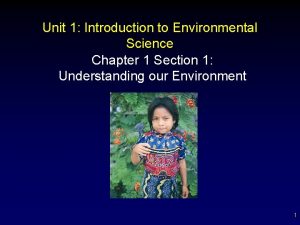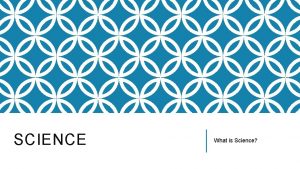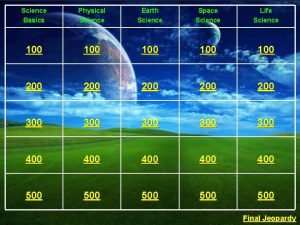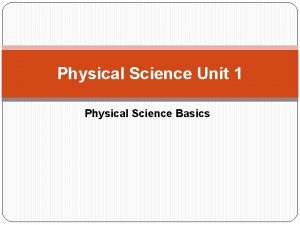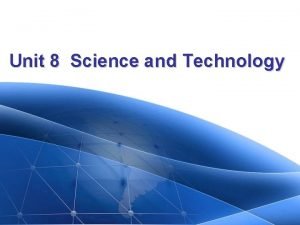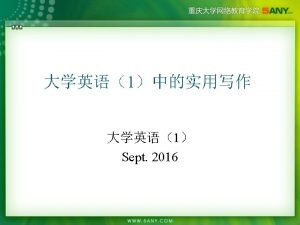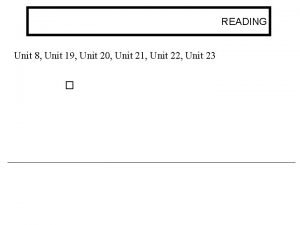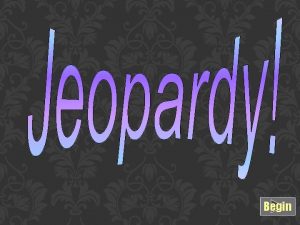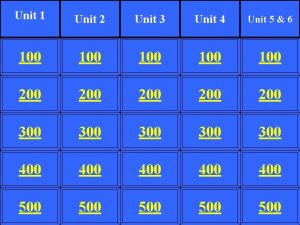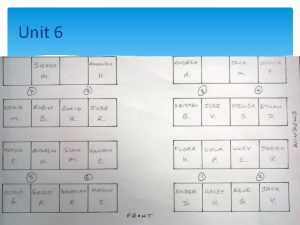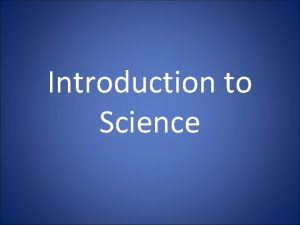Unit 1 Introduction to Science 1 1 The
















- Slides: 16

Unit 1: Introduction to Science 1. 1 The Nature of Science n 1. 2 The Way Science Works n 1. 3 Organizing Data n

What Scientists Believe: 1. 2. The universe can be described by basic rules. The rules can be DISCOVERED through study and experimentation. n A scientist may come up with a new hypothesis and experiment or simply check the results of other experiments.

Scientists do many things: n Scientists: – Investigate – Plan experiments – Observe • Wilhelm Roentgen accidentally discovered X-Rays by following the above procedures • Alexander Fleming and penicillin – Test results

What is Science? n Science is observing, studying and experimenting to find the nature of things. n How does science impact your everyday life?

Scientific Inquiry n Inquiry: A way of seeking information through questioning

Why a Scientist Performs Experiments To find out something new about the natural world. 2. To explain something that is already known. 3. To check the results of other experiments. 4. To test predictions of current theories. 1.

Science Has Many Branches Science Natural Science Biological Science: The science of the Living world Physical Science: The science of Matter and energy Examples: Botany, zoology, ecology Social Science Earth Science: The science of Our planet Examples: Physics and chemistry Psychology Examples: Geology and meteorology Sociology

Branches of Science: n These branches can intertwine: – Biochemistry: study of matter of living things – Geophysics: study of forces that affect Earth

Branches of Science Branch of Science Area of Study Physical science Matter and energy Social science Human behavior Chemistry Matter and its changes Natural science How the whole universe behaves Physics Forces and energy Geology Earth’s physical nature and history Meteorology The atmosphere and weather Biology Living things Botany Plants Zoology Animals Ecology Balance in nature

Science and Technology They work together and depend on one another. n Science: observing, studying, & experimenting to find the nature of things n Technology: using science to make human lives easier n – Computers, cell phones, cars, answering machines n Leonardo da Vinci: described and sketched ideas for many inventions years ahead of their time.

Leonardo da Vinci Aerial Screw Helicopter Flying Machine Other inventions: clocks, printing presses, drills, boats, cars, and battle tanks

Scientific Theories and Laws are supported by Observation: n Scientific Theory: An possible explanation of a natural event – n Example: Kinetic Theory of energy: explains why a saw blade gets hot when used. A theory must pass the following tests: 1. Explain observations simply and clearly. 2. Be repeatable. 3. You must be able to predict from a theory. n Scientific Law: repeated observation about nature, but does not explain why or how something happens

Theories and Laws n Theories and laws are NOT ABSOLUTE; they can change as new discoveries are made. – Example: People thought the world was flat for thousands of years n Some scientific theories are impossible to test in the laboratory. – For example: how the continents move cannot be tested in a laboratory setting.

Qualitative vs. Quantitative Statements: A qualitative statement describes an event with words. n Examples: n – The chalkboard is black. – There are posters on the wall. A quantitative statement describes with numbers or mathematical equations. n Examples: n – There are 10 posters on the wall. – The room has an area of 400 ft 2.

Scientific Models n A representation of an object or event used to understand concepts when the real object is too large, too small, or even too dangerous – Examples: • Globe • Model of an atom • Crash tests Models can be: • Drawings on paper • A real object (spring to represent sound wave • Mental “picture”

Homework Assignment n Write at least 5 complete sentences describing how science and technology depend on one another. Include how they work together to make your everyday life easier.
 What is your favourite lesson
What is your favourite lesson Extra credit
Extra credit Forensic science unit 1 review
Forensic science unit 1 review Unit 1 introduction to environmental science
Unit 1 introduction to environmental science Unit 6 review questions
Unit 6 review questions Hát kết hợp bộ gõ cơ thể
Hát kết hợp bộ gõ cơ thể Lp html
Lp html Bổ thể
Bổ thể Tỉ lệ cơ thể trẻ em
Tỉ lệ cơ thể trẻ em Gấu đi như thế nào
Gấu đi như thế nào Thang điểm glasgow
Thang điểm glasgow Alleluia hat len nguoi oi
Alleluia hat len nguoi oi Môn thể thao bắt đầu bằng chữ đua
Môn thể thao bắt đầu bằng chữ đua Thế nào là hệ số cao nhất
Thế nào là hệ số cao nhất Các châu lục và đại dương trên thế giới
Các châu lục và đại dương trên thế giới Công của trọng lực
Công của trọng lực Trời xanh đây là của chúng ta thể thơ
Trời xanh đây là của chúng ta thể thơ



